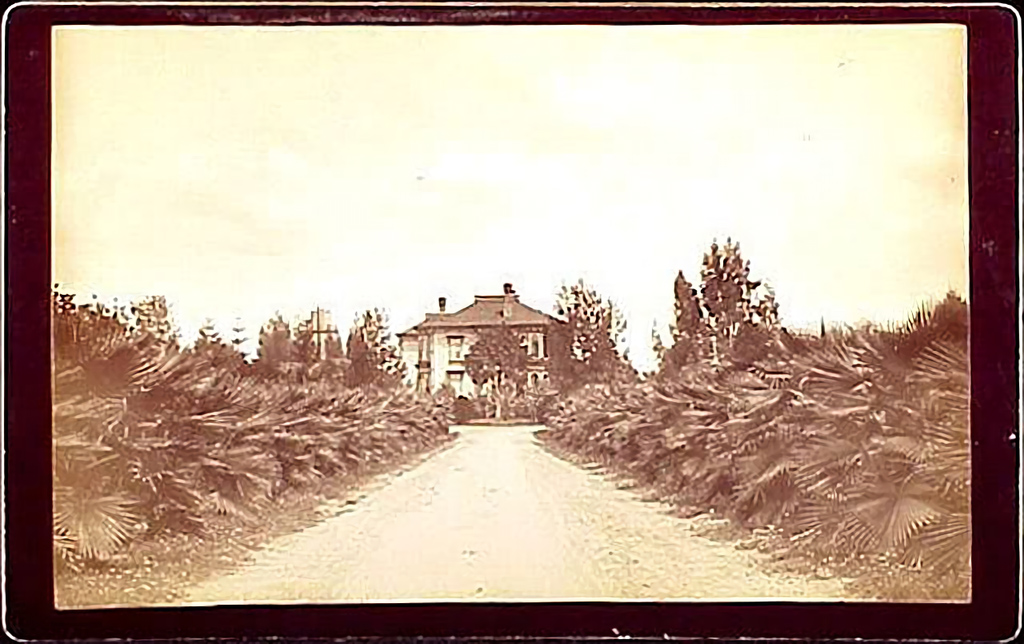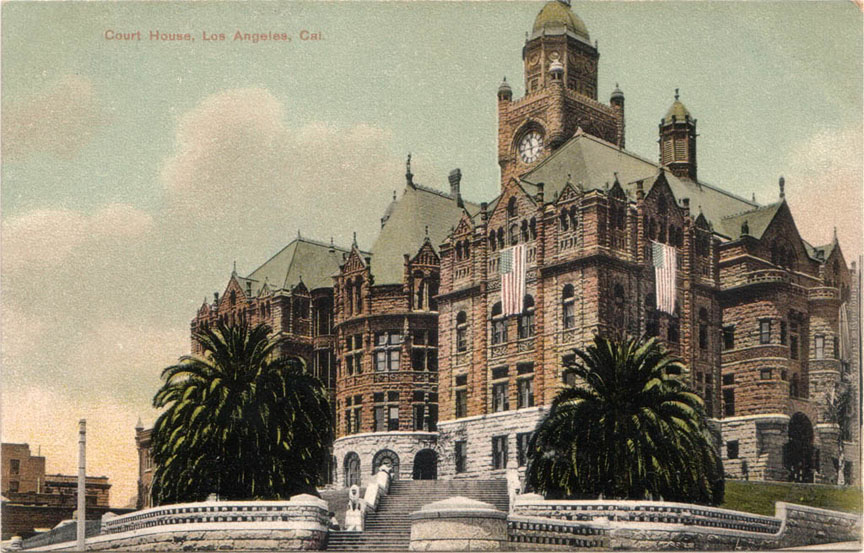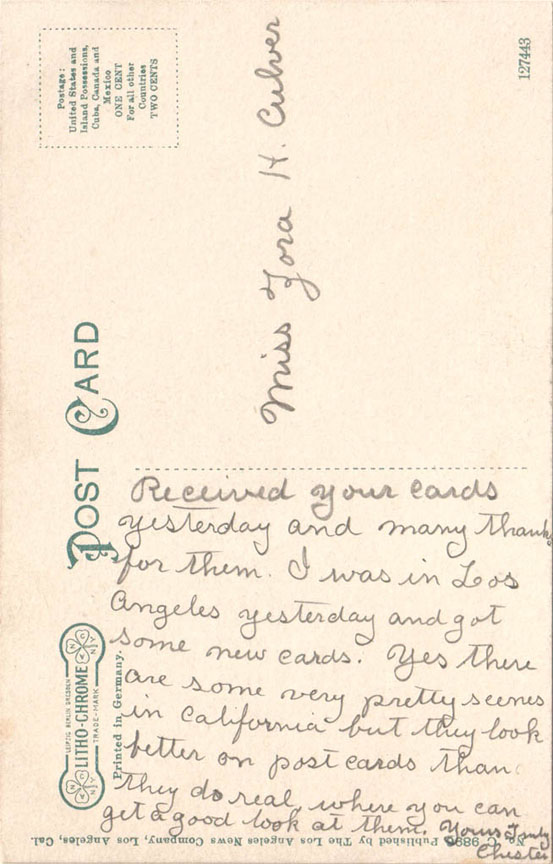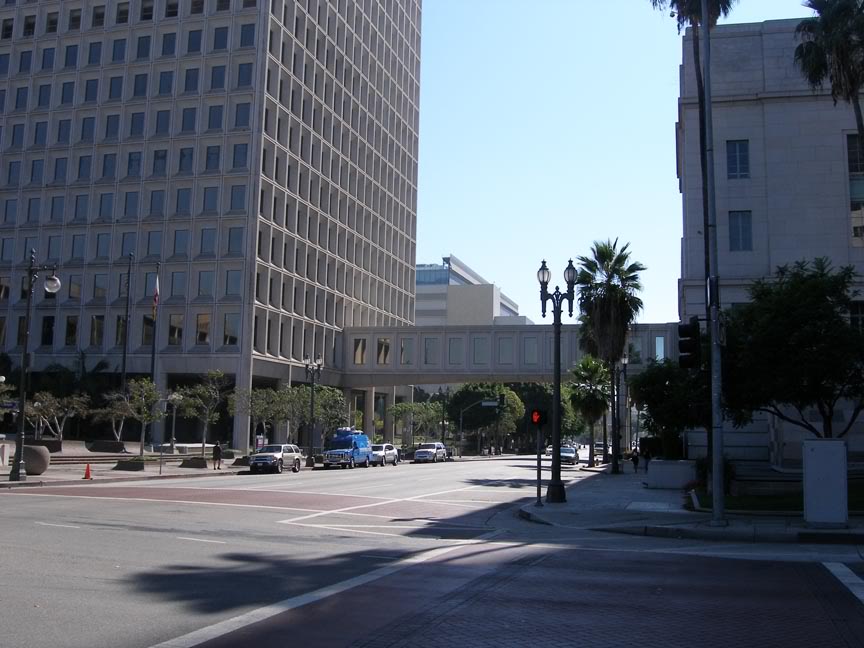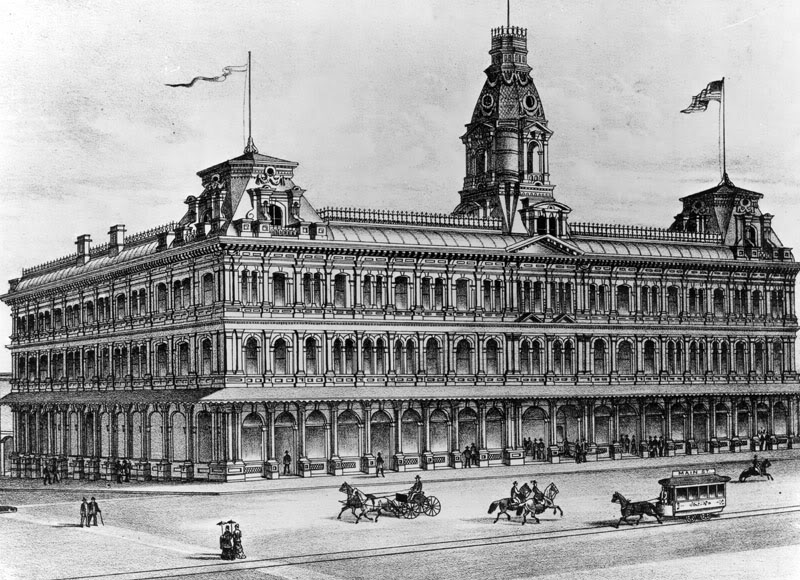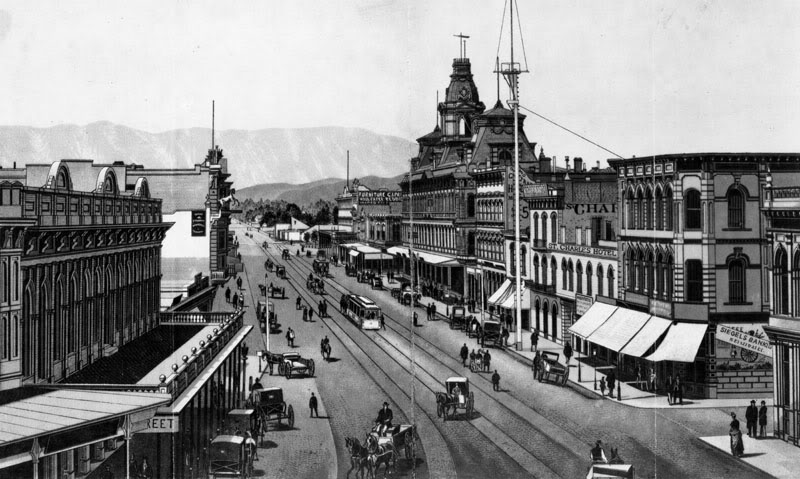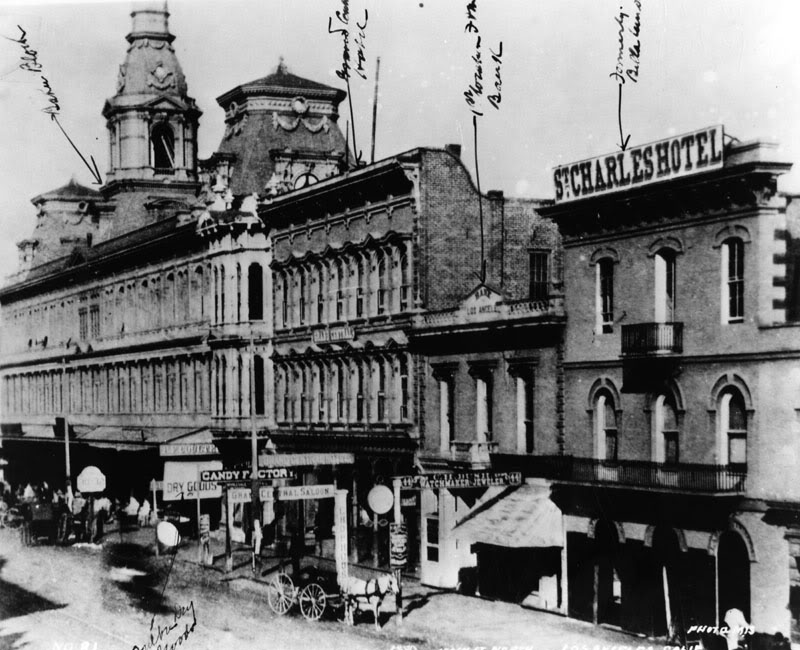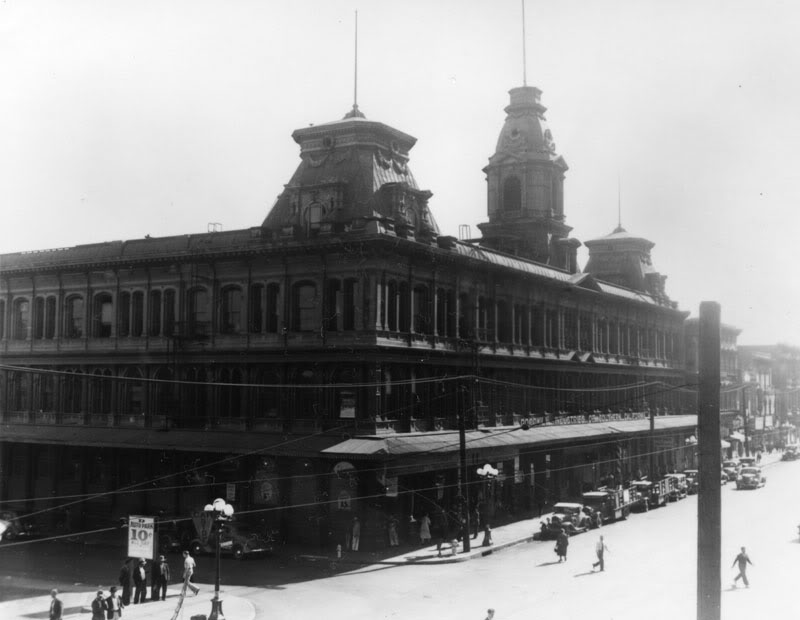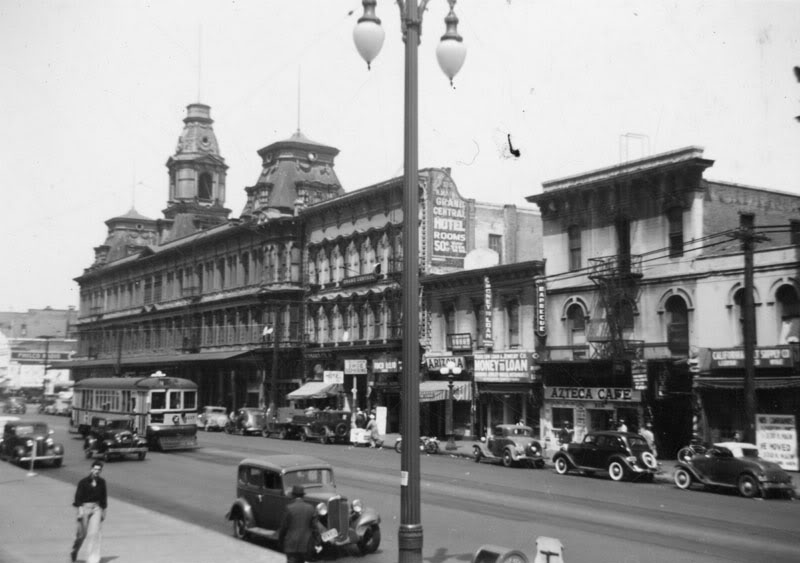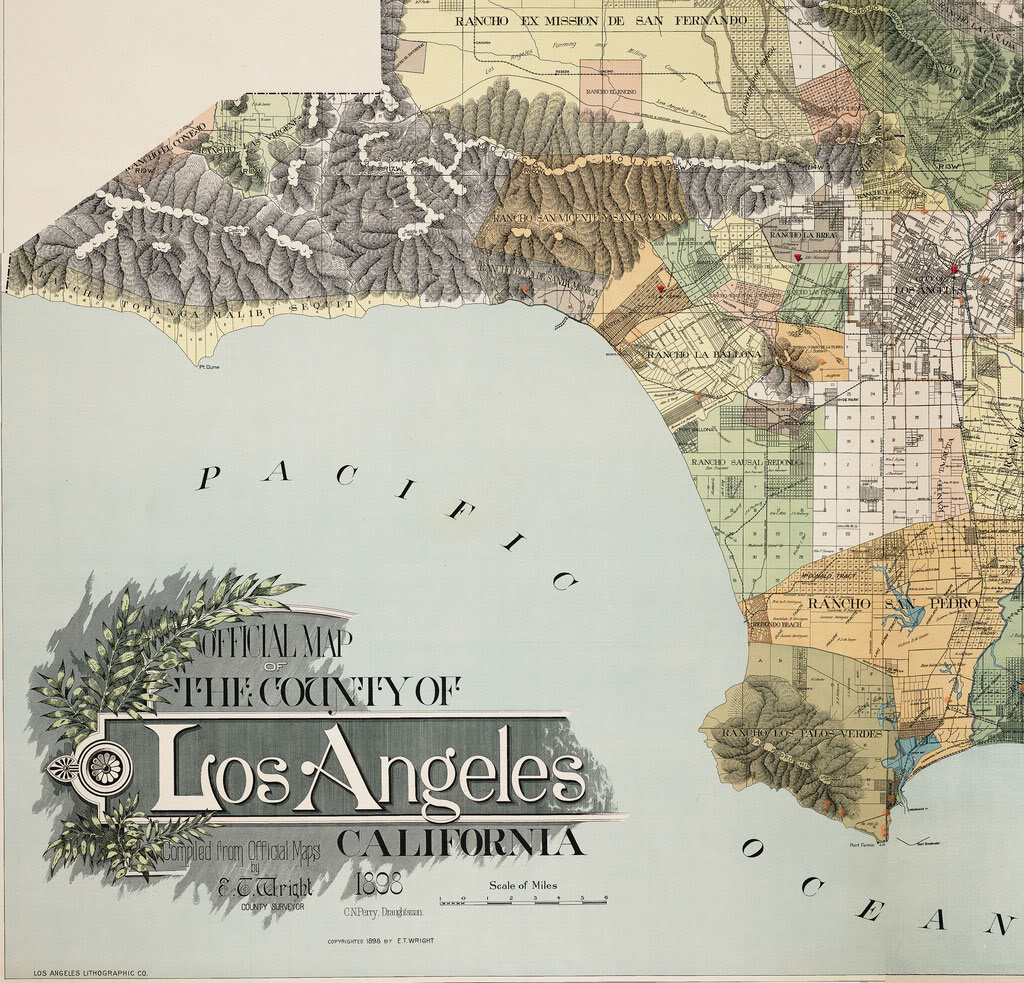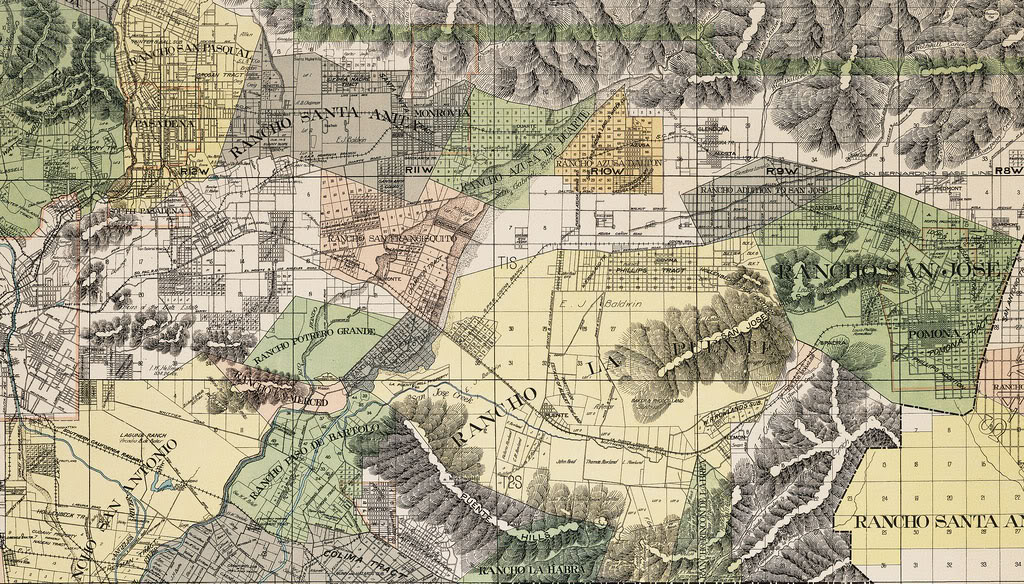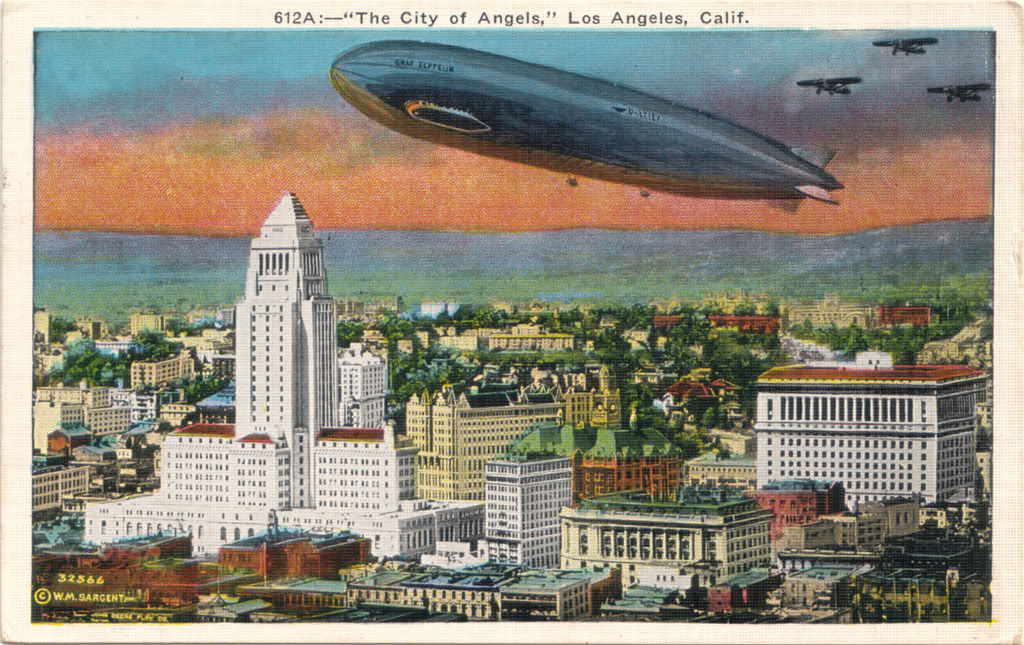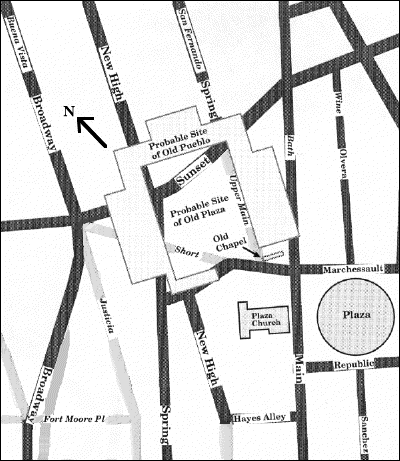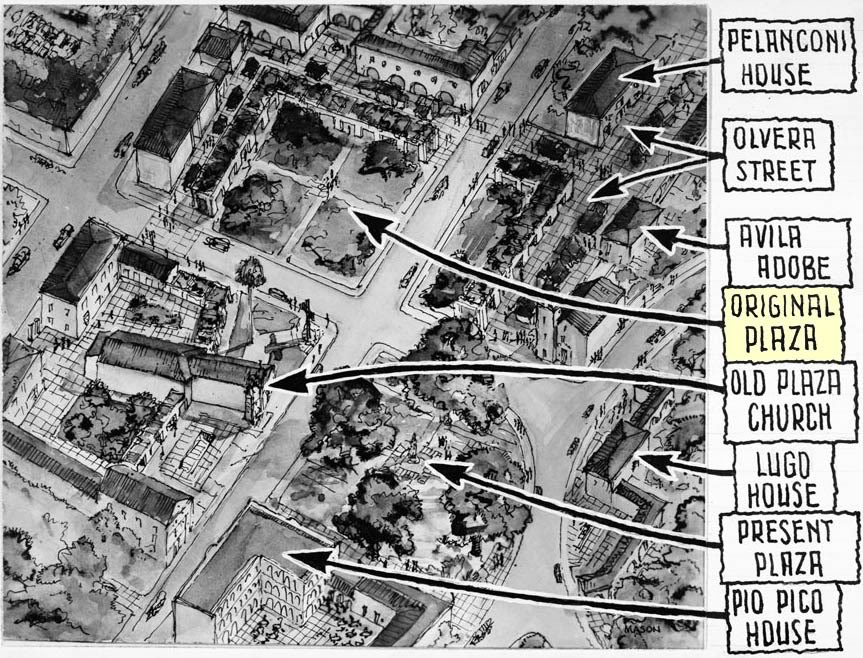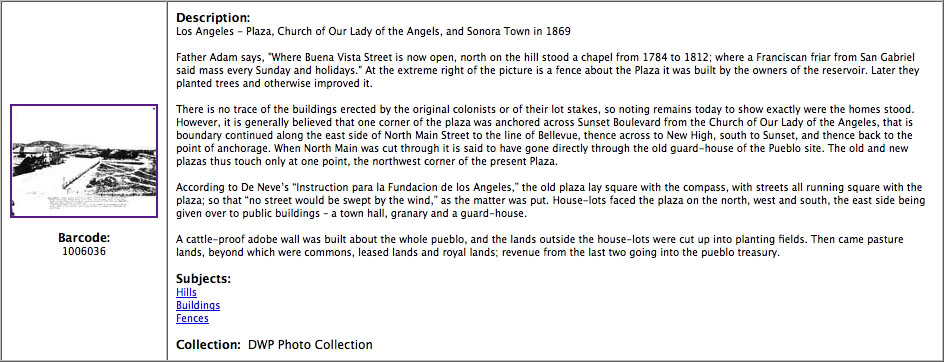Reader and past contributor
Nathan Marsak posited a question the other day: what if you had a time machine, and you could pop back to Old L.A. for a weekend. What time in the city's history would you choose?
For me, without a doubt, it would be the weekend of October 14-16, 1910.
Why? Mostly, it would be to attend the Saturday dedication of the brand new
'Million-Dollar' Post Office –
the building which first sparked my interest in L.A. history.

U.S.C. Digital Library.
For my accommodations, I'd book the top-floor corner room at the United States Hotel at Main and Market Sts., which would have an absolutely perfect vantage point for viewing the festivities in
Temple Square.

U.S.C. Digital Library.
There'd be plenty of other things to see and do while I was there, of course. Assuming I could get my hands on a period camera, I'd take a ton of good pictures of various buildings for posterity, especially the ruins of the L.A. Times Building, which had been
terror-bombed only two Saturdays ago.
I would also love to take a 360-degree panorama from the top of the 1888 Court House. (1910 would be the last year you could do that, with the Hall of Records rising immediately south of the Court House at that time.)
I'd also try to get an Edison cylinder recording of the bell chimes of the old Court House (and the 1888 City Hall's bells, if there actually were bells in that tower – does anyone know for sure?).
And I'd probably walk
the old diagonal alignment of Spring Street about a dozen times. I'd ride
Court Flight over and over, too, until they kicked me off of it. (Never mind Angels Flight – been there, done that, 50 years later.)
;)
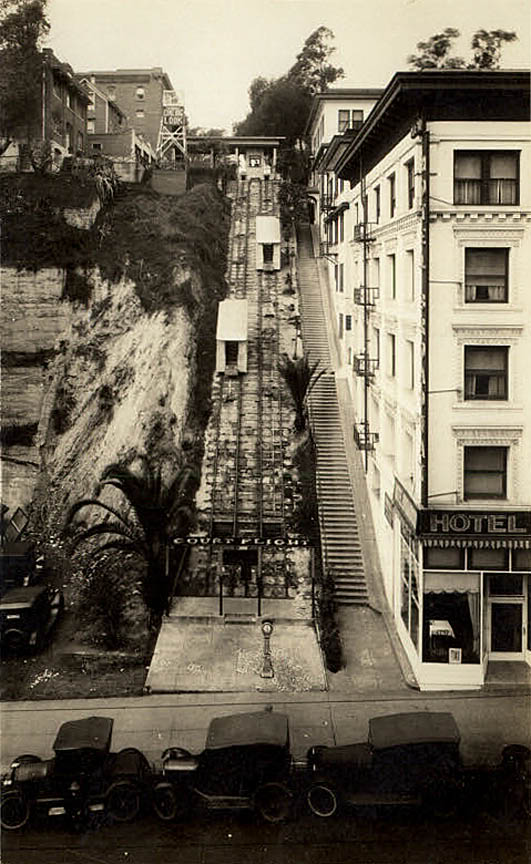
Court Flight.
Re: dining – I'd probably eat breakfasts at the Hollenbeck Hotel and the
Hotel Nadeau, and at least one lunch at the little hole-in-the-wall indicated in this old postcard. It had to be good! Someone actually wrote home about it!
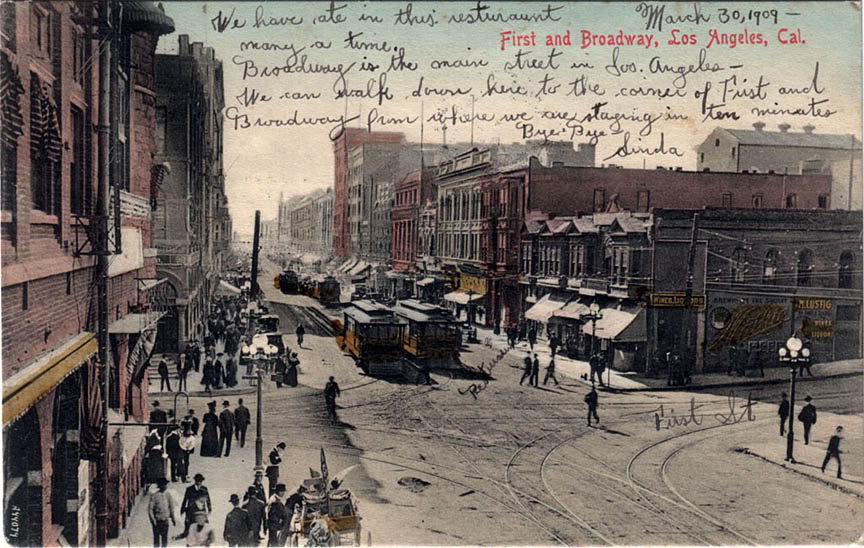
But mostly I'd eat as much "Spanish" food (as Mexican food was called at the time) as I could. I'd be very curious to know what the native cuisine tasted like a hundred years ago!
I'd do a bunch of other things, too, including a mandatory jaunt down to the
Longstreet Palms. World-famous at the time, no visit to old L.A. would be complete without seeing them!

Another time I'd like to travel back to would be October of 1936, so I could see the Los Angeles that my mother knew when she first moved there. Of course, Number One on my list of places to visit then would be the incredible
Richfield Building. I'd also take my own set of
panoramic photos from atop City Hall, and go to the Paris Inn every night for dinner, too. My kind of place, definitely!
But most of all, I'd make sure to be hanging out at the northwest corner of Olympic and Broadway during lunch hour on Tuesday, October 20th, so I could watch a certain snooty young lady get her picture taken by a street photographer.
8)
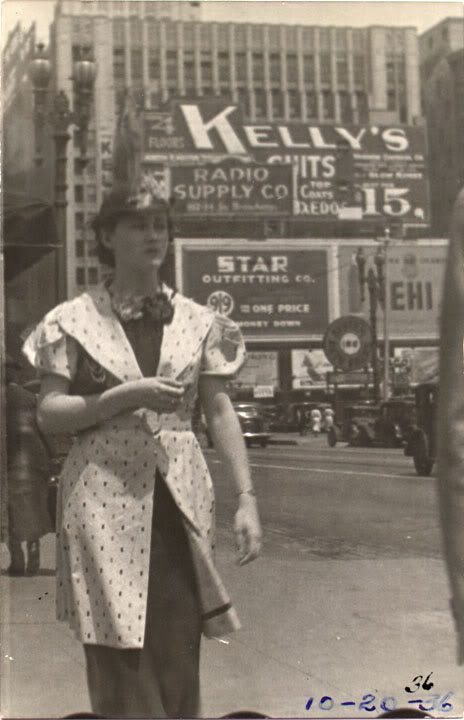
Ooooh, now here's a Twilight Zone thought for you – what if Mom's photographer actually turned out to be time-traveler Me?!
D:
